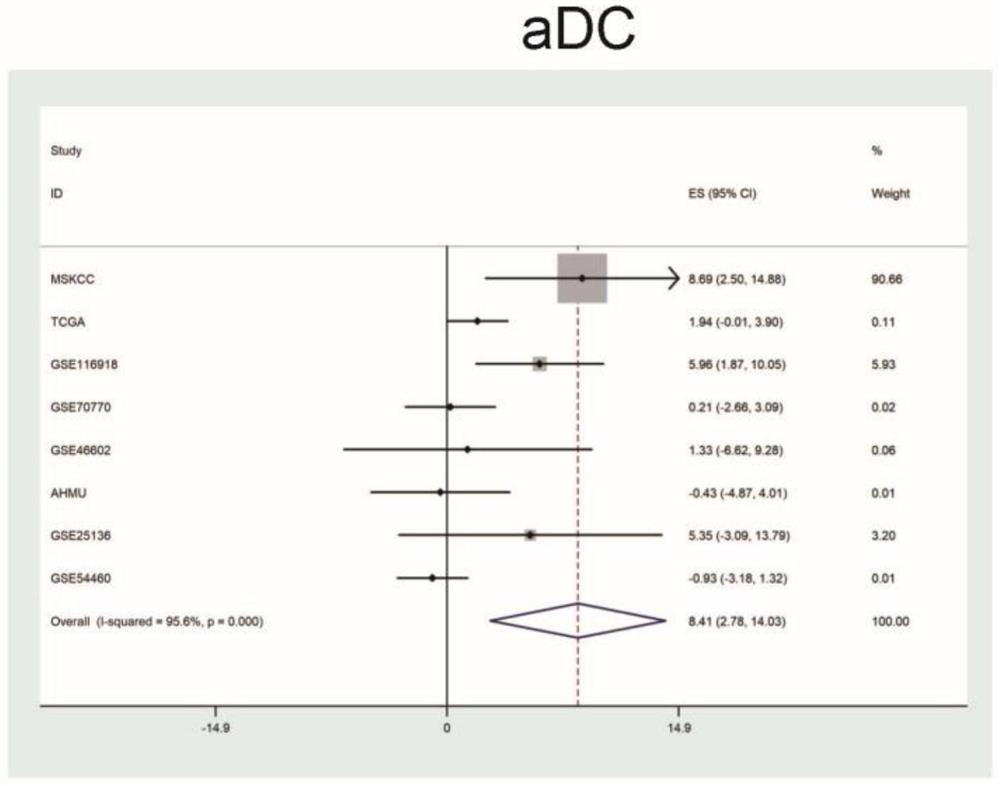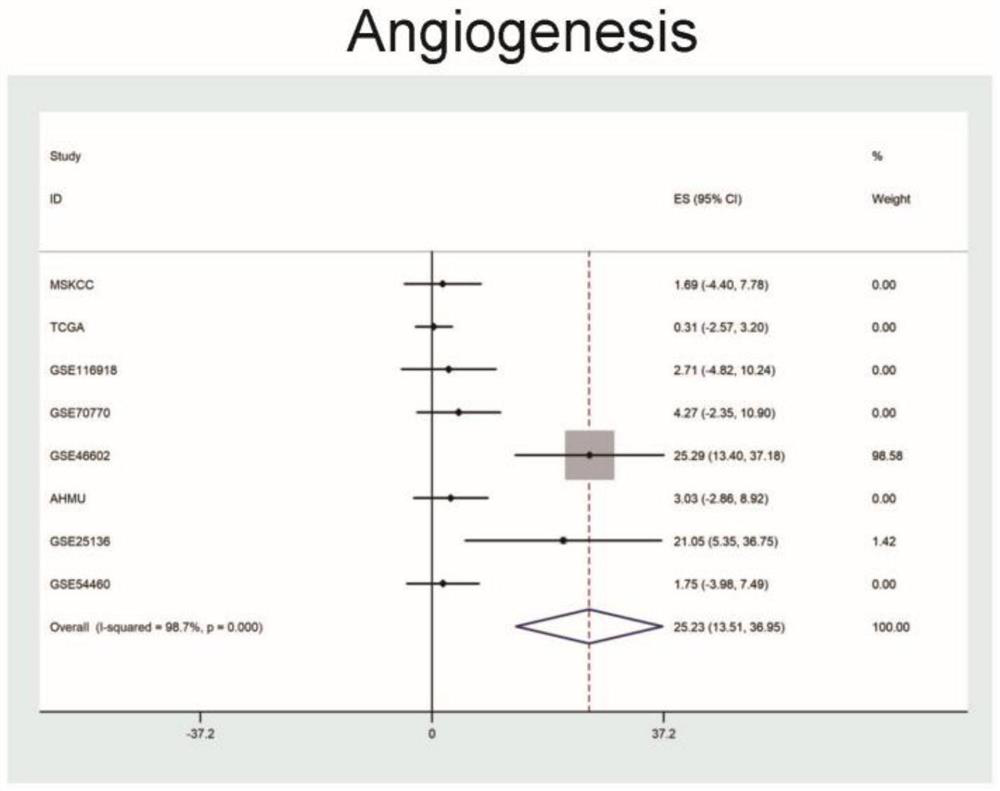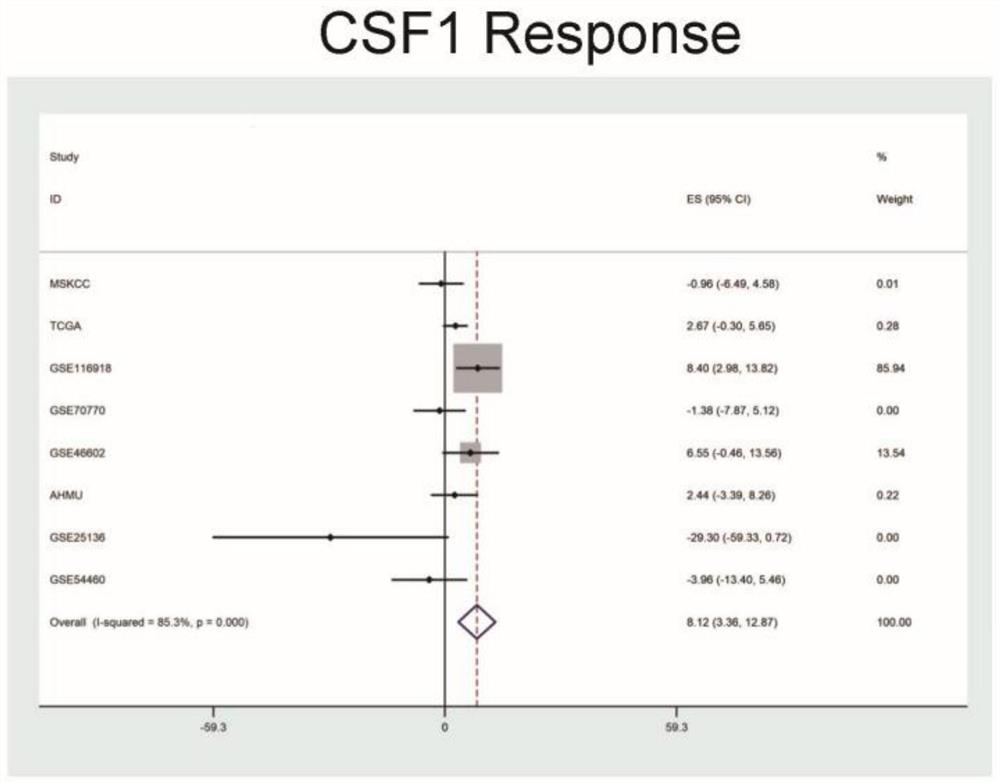Prognosis evaluation system for prostate cancer patient and application thereof
A prostate cancer and prognosis assessment technology, applied in the field of biomedicine, can solve problems such as the inability to predict the prognosis of prostate cancer patients and the inability to guide clinicians to treat patients, and achieve the effect of improving prediction efficiency
- Summary
- Abstract
- Description
- Claims
- Application Information
AI Technical Summary
Problems solved by technology
Method used
Image
Examples
Embodiment 1
[0029] Establishment of PCIPI:
[0030] (1) Collection of patients and their clinical characteristics:
[0031]Formalin-fixed paraffin-embedded tissues were collected from 69 patients who underwent radical prostatectomy in the Department of Urology, The First Affiliated Hospital of Anhui Medical University (AHMU-PC cohort), and each patient's data were obtained from electronic medical records. Pathological information, regular follow-up, follow-up endpoint is biochemical recurrence (BCR), which is defined as 6-13 weeks after radical prostatectomy, the level of prostate-specific antigen (PSA) in patients increases and is greater than 0.2ng / mL, and in the following The follow-up examination was maintained at a high level; and all involved and testing procedures were carried out in accordance with the Declaration of Helsinki II and approved by the Ethics Committee of the First Affiliated Hospital of Anhui Medical University (approval number: PJ2019-09-11), and from the public dat...
Embodiment 2
[0055] Predictive detection of the PCIPI system in adjusting key clinicopathological features:
[0056] (1) Screening the above cohorts with HR values greater than 1.5, multivariate Cox regression analysis was carried out; it was found that in the four cohorts of TCGA-PRAD, AHMU-PC, GSE116918 and GSE70770, PCIPI was an independent prognostic factor for prostate cancer patients (as follows shown in Table 3);
[0057] (2) The restricted mean survival time (RMS) ratio was used to compare the RFS outcomes of patients in different PCIPI subgroups. The ratios of the four data sets were all between 0.63 and 0.89 (as shown in Table 4 below), That is, the prediction result is relatively stable;
[0058] (3) In the TCGA-PRAD and AHMU-PC cohorts, NES of aDC, angiogenesis, macrophages, NK cells, and pro-inflammatory signals were increased in the PCIPI-HIGH (high score) subgroup (P Figure 15 G and Figure 16 shown).
[0059] Table 3: PCIPI as an independent predictor of recurrence-fre...
Embodiment 3
[0066] To further assess whether PCIPI is indicative of immune infiltration in prostate cancer patients:
[0067] (1) Assess the correlation between the PCIPI determined above and the immune score and tumor purity defined by Yoshihara et al. In the TCGA-PRAD and AHMU-PC groups, PCIPI was significantly positively correlated with Immune Score (all P Figure 15 H-I), and negatively correlated with tumor purity (all P Figure 15 J-K); in MSKCC, GSE70770, GSE46602 and GSE116918 cohorts, similar results were obtained (eg Figure 15 L);
[0068] (2) The infiltration abundance of TILs was confirmed by HE staining, and the infiltration degree of these cells was confirmed to be positively correlated with the PCIPI score in the TCGA-PRAD cohort (P Figure 15 M);
[0069] (3) GSEA analysis was also performed to compare the PCIPI-HIGH and PCIPI-LOW (low score) groups in the TCGA-PRAD cohort, and found that the chemokine signaling pathway in the PCIPI-HIGH subgroup ( Figure 15 N), B cell rec...
PUM
 Login to View More
Login to View More Abstract
Description
Claims
Application Information
 Login to View More
Login to View More - R&D
- Intellectual Property
- Life Sciences
- Materials
- Tech Scout
- Unparalleled Data Quality
- Higher Quality Content
- 60% Fewer Hallucinations
Browse by: Latest US Patents, China's latest patents, Technical Efficacy Thesaurus, Application Domain, Technology Topic, Popular Technical Reports.
© 2025 PatSnap. All rights reserved.Legal|Privacy policy|Modern Slavery Act Transparency Statement|Sitemap|About US| Contact US: help@patsnap.com



